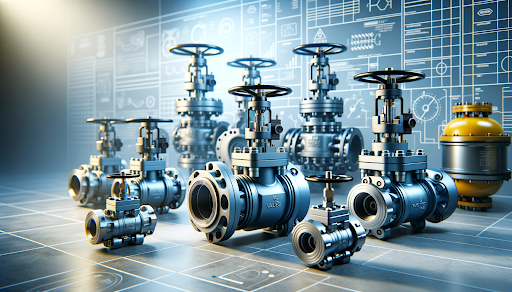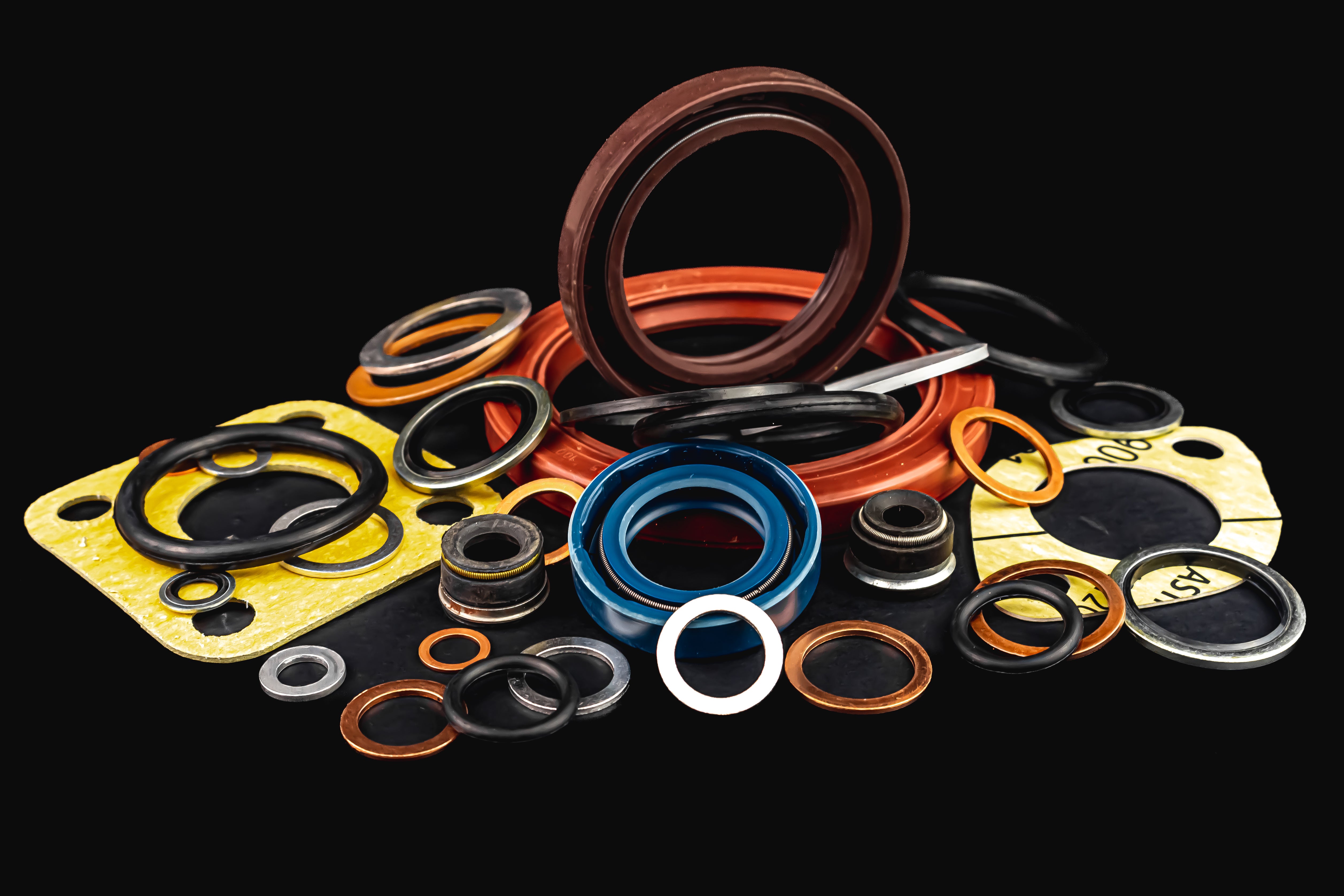
Control Valves 101: Valve Types, Parts, and Applications
Control valves play an integral role in many industrial processes as they help regulate the flow, pressure, temperature, and level of fluids or gasses in a system. These valves are essential for ensuring efficiency, safety, and optimal performance in various industries such as oil and gas, chemical processing, power generation, and water treatment. In this article, we'll delve into the fundamentals of control valves, covering everything from the different types of valves to their essential parts and key applications. While you're here, feel free to browse our curated selection of pressure washing tools and equipment.
Understanding Control Valves
Control valves are essential components in a wide range of industries, where precise control over fluid or gas flow is necessary. They are designed to regulate the rate, pressure, temperature, or level of the substance passing through a system, ensuring that it operates within desired parameters. By limiting or enhancing the flow of fluids or gas, control valves enable operators to maintain process stability, optimize performance, and achieve the desired outcome.
What are Control Valves?
Control valves are devices that control the flow of fluids or gases in a system. They consist of several components that work together to regulate the pressure, temperature, and level of these substances. Control valves act as gatekeepers, allowing operators to adjust and control the amount of material passing through a pipeline or process. By manipulating the valve's position, the flow rate can be increased, decreased, or completely shut off.
Working Principle of Control Valves
Control valves operate based on the principle of fluid pressure, which is used to open or close the valve and control the flow rate. The valve consists of a movable disc or plug, known as the valve trim, which is connected to a stem. When the valve is in the closed position, the trim blocks the flow of fluid or gas. As the stem is rotated or moved linearly, it lifts or lowers the trim to regulate the flow.
The valve body, an essential part of the valve, works in tandem with actuators, which can be electric or pneumatic actuators, to produce linear or rotary motion for valve movement. The actuator receives signals from a control system, which monitors the pressure, temperature, or level of the fluid or gas in the system. Based on these signals, the control system sends instructions to the actuator, which in turn adjusts the position of the valve trim to achieve the desired flow rate.
Control valves are designed to maintain process control, even in the presence of load disturbances or variability. They respond to changes in process variables by adjusting the flow area, ensuring that the desired set point is maintained. For example, if there is an increase in flow rate, the control valve will reduce the flow area to control the flow rate and bring it back to the desired set point. Similarly, if there is a decrease in flow rate, the control valve will increase the flow area to maintain the desired set point.
Types of Control Valves
There are several different types of control valves, each designed for specific applications and conditions. Some of the most common types include:
Globe Type Control Valve
Globe type control valves offer linear motion control, well-suited for throttling applications and high pressure drop capabilities, making them ideal for flow control. These valves are equipped with a valve body, stem, and plug, enabling effective flow regulation due to their robust design, ruggedness, and shutoff performance, making them versatile in various applications. Globe valves excel in controlling flow rates and process variables, proving to be a vital component in numerous industrial processes.
Butterfly Type Control Valve
Butterfly valves utilize rotational motion to control flow, ensuring rapid shutoff. Their efficient flow regulation is enabled by the design of the valve stem, body, and disc. These high-performance butterfly valves strike a balance between performance, torque, and flow capabilities in control applications. Well-suited for low-pressure, high-capacity flow control requirements, they are popular due to their compact design, low leakage, and energy efficiency.
V-Port or Segment Ball Valve
V-Port and segment ball valves deliver precise flow control, ideal for flow rate applications and optimizing process performance. Their design, positioner, and actuator ensure accurate modulation and pressure drop control. These valves are adaptable to diverse control scenarios, offering reliable regulation of process variables. V-Port or segment ball valves are a versatile and essential element in automatic control valves, particularly in industries dealing with chemical compounds. The high performance butterfly valve is among the most common final control elements used in various applications like heaters and fittings in the USA.
Eccentric Plug Control Valve
Eccentric plug valves provide exceptional control, especially in demanding conditions. Their plug, body, and actuator components enable precise flow control, offering high flow capacity, resistance to leakage, and effective cavitation control. These valves are suited for applications requiring accurate flow modulation and shutoff. Their robustness, reliability, and adaptability to process variables make them incredibly valuable assets.
Reduced Trim Full Ball Valve
Versatile and adaptable, reduced trim full ball valves are ideal for high flow capacity applications. Offering accurate flow control and exceptional shutoff performance, these valves also facilitate precise flow modulation and pressure control. Their ball valve design, accessories, and torque characteristics enhance process efficiency, making them a versatile choice for diverse control scenarios. Reduced trim full ball valves are a valuable addition to any system requiring automatic control valves, ensuring reliable and efficient operation.
Deep Dive into Valve Applications
Control valves are an integral part of various industries, playing a crucial role in regulating the flow of fluids and gases. Let's take a deep dive into some specific valve applications to understand their significance.
In chemical processing, where precise flow control is paramount, the V-Port or Segment Ball Valve shines. Its unique design allows for accurate adjustment of the opening size, ensuring optimal flow rate regulation. This makes it ideal for handling volatile chemicals and maintaining process stability.
Oil and gas pipelines require tight shut-off capabilities along with precise flow control. The eccentric plug control valve fits the bill perfectly here. With its off centered plug design, it provides excellent shut-off capabilities, preventing any leakage or unintended flow. Its ability to accurately control the flow rate makes it a reliable choice for maintaining system efficiency and safety in oil and gas pipeline operations.
In water treatment plants, where both shut-off and flow control are crucial, the eccentric plug control valve proves its worth once again. Its tight shut-off ensures that no water is wasted or contaminated, while its precise flow control valve allows for optimal treatment processes. Whether it's regulating the flow of chemicals, adjusting the water level, or controlling the pressure, this type of control valve offers unmatched performance and reliability.
Power plants rely on control valves to ensure efficient operation and safety. Among the various types of control valves used in power plants, the butterfly valve stands out for its versatility. It can handle a wide range of flow rates and pressures, making it suitable for different stages of power generation. Whether it's controlling steam flow, regulating cooling water, or managing fuel supply, the butterfly valve provides reliable performance and precise control.
How to Choose the Right Control Valve?
Choosing the right control valve is crucial for ensuring optimal performance and efficiency in various industries. Here are some factors to consider when selecting a control valve:
- Flow requirements: Determine the desired flow rate and whether it needs to be controlled continuously or in discrete steps. This will help you choose a control valve that can handle the required flow range.
- Process conditions: Consider the temperature, pressure, and fluid characteristics of your application. Some control valves may be better suited for high-pressure environments, while others may have specific material requirements for certain types of fluids.
- Control accuracy: Assess how accurately you need to control the flow or process parameters. Some applications require tight control with minimal deviation, while others may allow for more flexibility.
- Shut off capability: Determine if the control valve needs to have the ability to completely shut off the flow when necessary. Some applications, such as emergency shutdowns or maintenance procedures, may require this feature.
- Maintenance and reliability: Evaluate the maintenance requirements and reliability of different control valve options. Look for valves that are easy to maintain and have a proven track record of reliability to minimize downtime and ensure smooth operations.
- Control signal compatibility: Consider the type of control signal utilized in your system, whether it's pneumatic, electric, or hydraulic. Ensure that the control valve you choose is compatible with your system's control signal to ensure seamless integration and operation.
- Size and compatibility: Take into account the size and compatibility of the control valve with your existing piping system. Ensure that the valve can be easily installed and fits within the available space without causing any interference or restriction in flow.
Can control valves be integrated with other process control systems, such as SCADA or DCS?
Yes, control valves can be integrated with other process control systems like SCADA (Supervisory Control and Data Acquisition) or DCS (Distributed Control System). This integration allows for centralized monitoring and control of the valves, enhancing overall process efficiency and automation.
Final Thoughts
In conclusion, control valves are crucial components in any fluid control system. When selecting a control valve for your application, it is important to consider factors such as the type of process, pressure and fluid characteristics, control accuracy, shut off capability, maintenance and reliability, control signal compatibility, and size and compatibility.
By carefully evaluating these factors, you can choose a control valve that meets the specific requirements of your application. Whether you need precise flow control in a high-pressure environment or a valve that can completely shut off the flow when necessary, there are options available to suit your needs.
As a leading manufacturer of control valves, MTM Hydro Parts Powered by Veloci is committed to providing reliable and high-quality control valves for various industries. Sign up now for exclusive giveaways and special offers on equipment parts.


